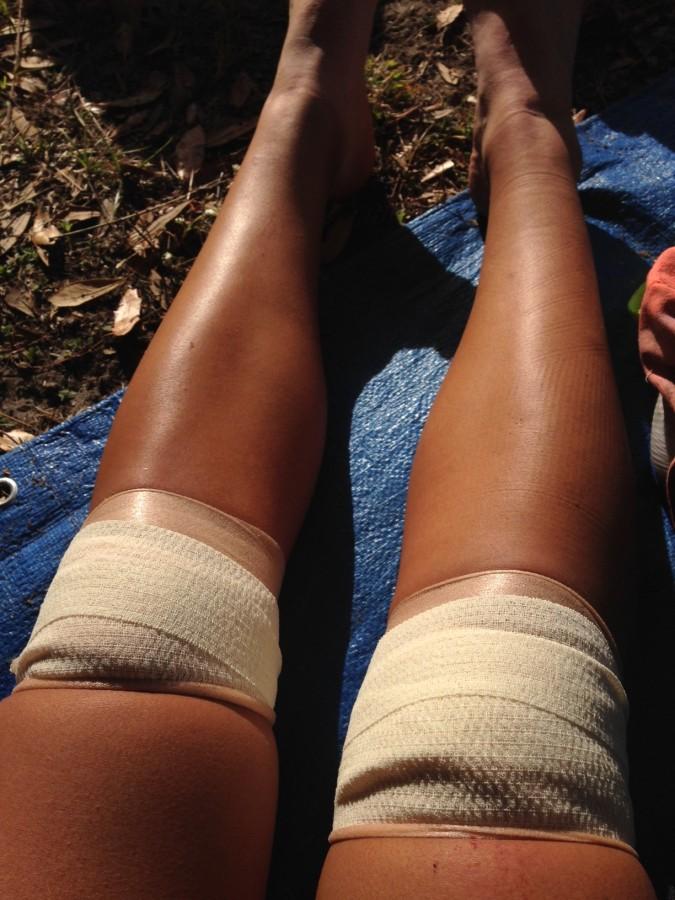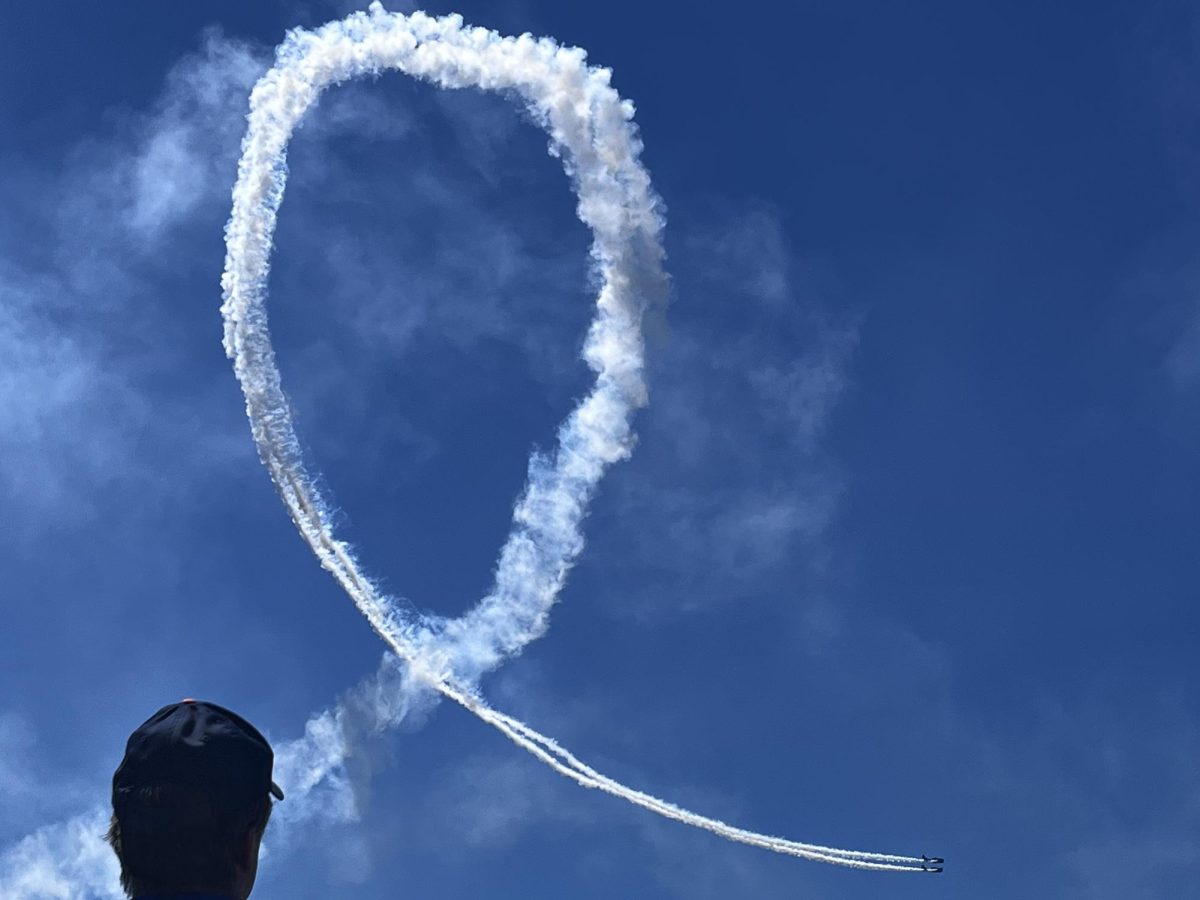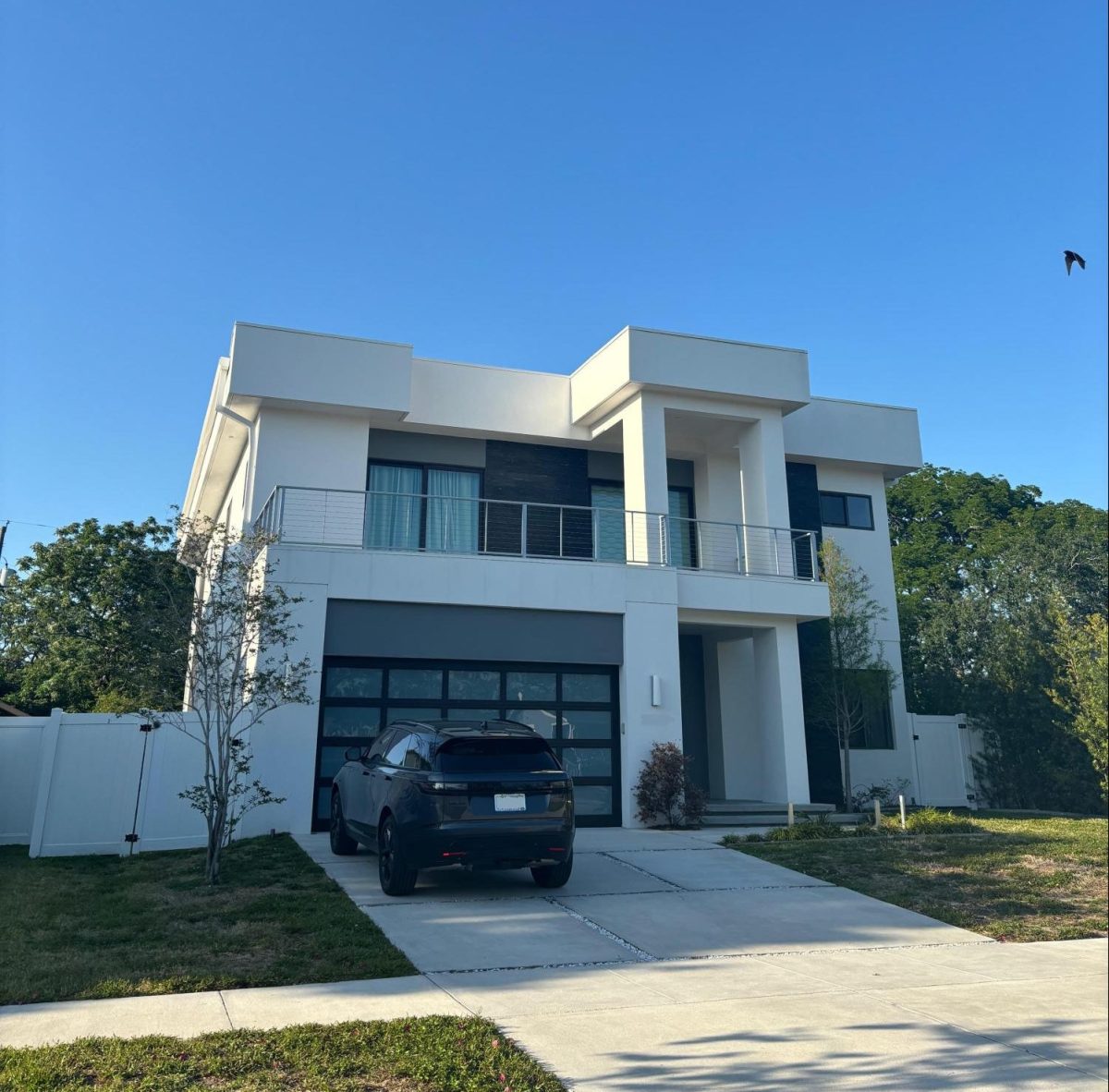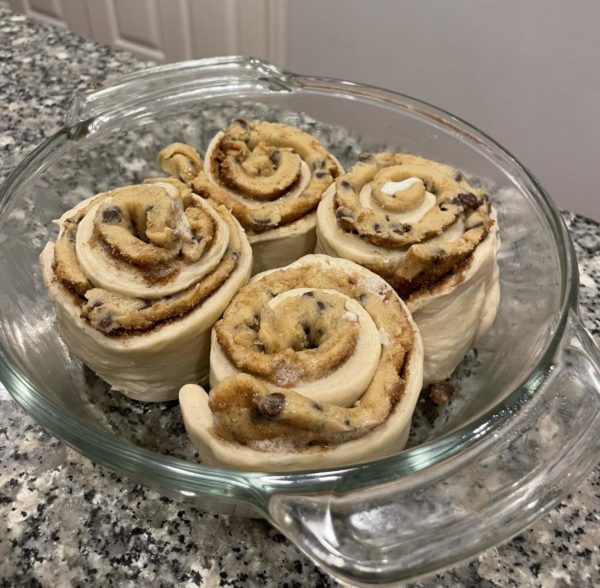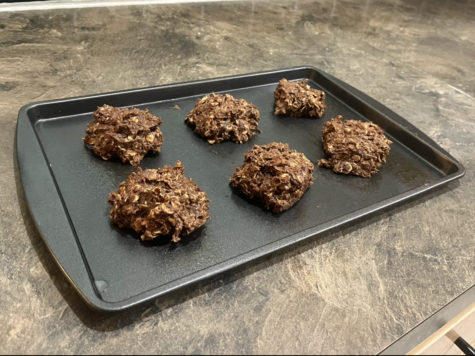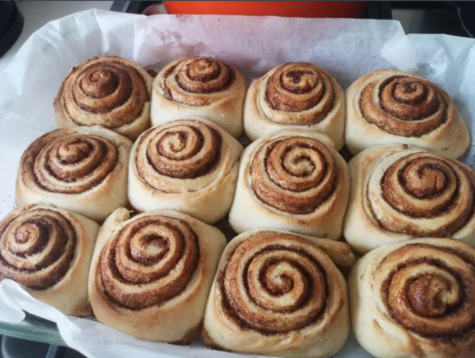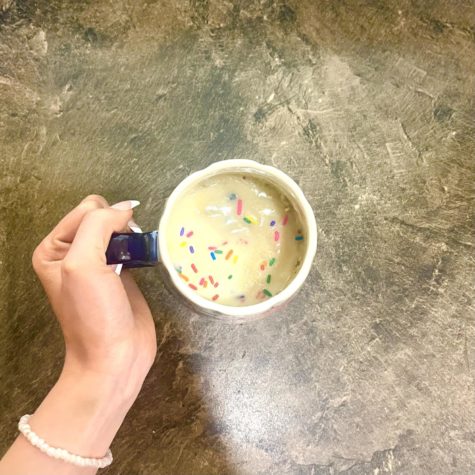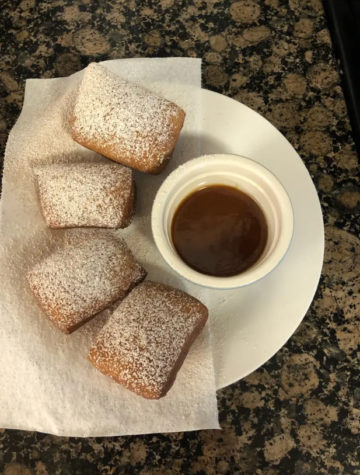Fit Bits: Battle Wounds & Runners
Photo I. Hanewicz
My wrapped knees after falling on the track.
March 8, 2016
At one point, all runners will ask themselves one question: why am I doing this?
My moment came Saturday, Leto High School, around 8:30 in the morning. I was just passing the 200m mark of my 1600m race (for those of you non-track athletes, that means I was about half-a-lap into a four-lap race), when someone – or maybe it was my own clumsiness – tripped me.
I remember falling.
Then I remember slamming facedown onto the track. In the milliseconds it took me to realize I was, in fact, lying on the track as the rest of the runners ran around me, all I could think was: I have to get up and race now.
Quicker than I certainly thought I’d be, I scrambled back up, making my way around the groups of people I shouldn’t have been racing next to in the first place.
Coming around the curve after my fall, I made the idiotic mistake of glancing down at my knee. I saw a glimpse of red, then immediately looked up. Okay, Isabel, don’t do that again, I thought to myself. Just don’t think about it.
The next three laps can be summarized in one word: painful. My hands, which skidded along the rubber track as I attempted to brace my fall, throbbed with a stinging vengeance that got louder with every pump of my arms.
Every time I tried to speed up, my right knee felt stiff, making the slow 6:30 pace I was running seem challenging. It wasn’t a pain, exactly – more like an argument: my mind was telling my right knee to stride faster, my knee responding that it was actually unable to do that at the moment.
This silent conversation continued throughout the rest of the race, which I finished in a fairly unimpressive 6:35 or so. Honestly, I didn’t ask for my time. I crossed the finish line and immediately hobbled over to the trainer’s tent, realizing that not one but both of my knees were bleeding.
“Excuse me,” I told him, trying to sound polite and not pained. “Could you bandage these for me?”
The trainer, probably seeing his first patient of the day, gave me a bemused look and nodded, proceeding to wrap up my knees with so much pre-wrap and athletic tape that it looked like I was wearing a volleyball player’s kneepads.
Standing on the infield, looking down at my beat-up knees, I couldn’t help but think how weird our sport must seem to some.
One of the only things I tell all newbies before their first race is that no matter what happens, you keep going. Fall down, get up. Shoe comes off, run without it. Get spiked in the shins, throw up, whatever it is, just keep running.
I often joke that running is a sport for the slightly masochistic, as loving running requires embracing the pain of running. Fast, slow, fat, skinny – runners are a strange breed, bound together by a common interest.
For a runner, I think each run has a different motivation.
Often, we’re running towards a goal, a dream, a desire, whether it be based in running or not. Each step, we imagine ourselves chasing down our destiny, as if fate will speed up if our pace does.
Other times, we’re running away from something, such as the stress and troubles of a particular day, fooling ourselves into thinking that each step further down the road is a step further away from our troubles.
I’ve always told myself not to run angry. But every time I’m upset, I somehow find myself lacing up my running shoes and sprinting out the door, practically sprinting the first mile of an easy run because I’m convinced that I will somehow prove something or someone wrong if I can only run just a little bit faster.
After 15 minutes or so, I usually end up leaning on the railing of Bayshore Boulevard, gasping for breath after flying down the sidewalks in an attempt to run away the pain, yet all I’ve done is add to it.
Why do I run?
Because I’m a runner, and runners are hardwired to endure whatever obstacles are thrown our way. Nothing, not even a rubber track and bleeding knees, can keep me down for good.

